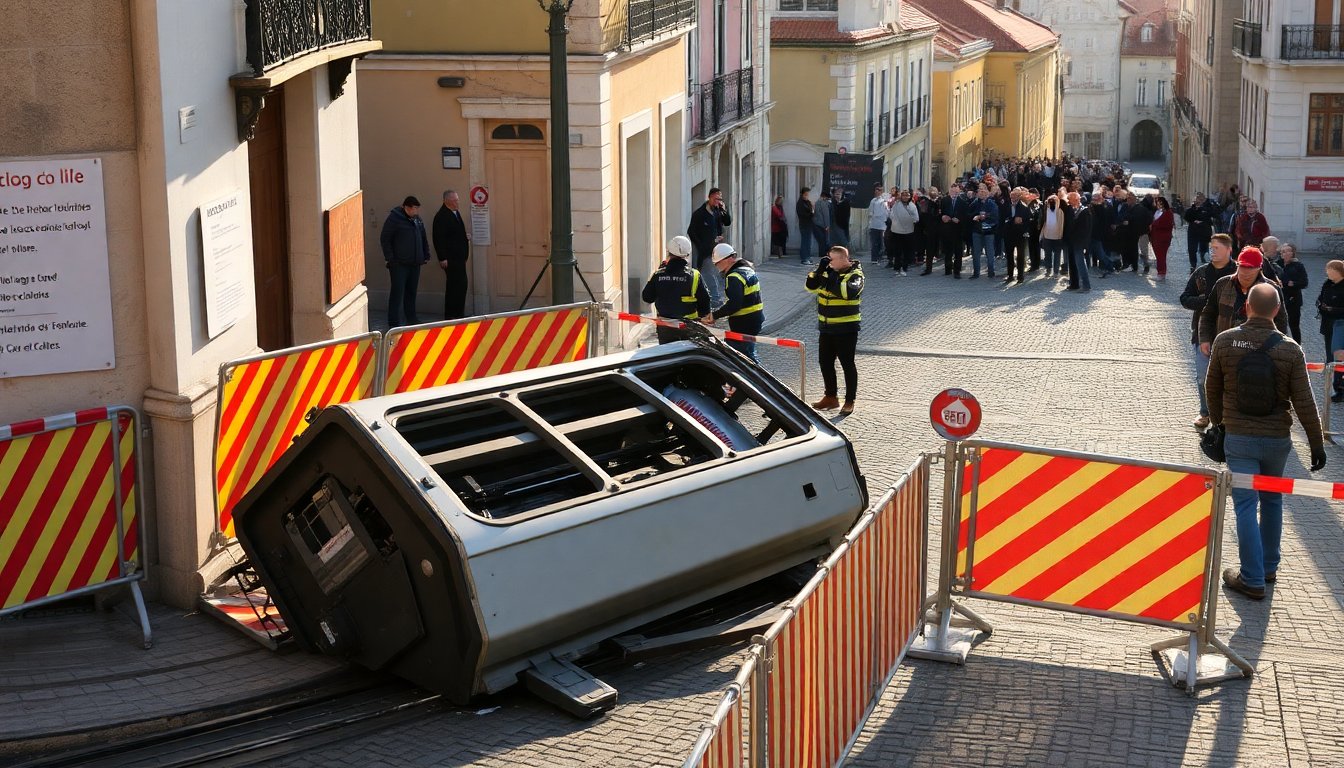Table of Contents
The recent crash of the Elevador da Gloria funicular in Lisbon represents one of the most devastating transport accidents the city has witnessed in years. With at least 15 fatalities and numerous injuries, this incident has sent shockwaves through the local community and raised critical questions about the safety of the city’s transport infrastructure. As emergency services continue to investigate the specifics of the accident, the implications for both residents and tourists are profound.
The Incident: A Detailed Overview
On a seemingly ordinary Wednesday evening, just after 6 PM local time, the Elevador da Gloria derailed, resulting in a catastrophic collision with a nearby building. This historic funicular, a beloved mode of transport linking the bustling Baixa district with the vibrant Bairro Alto neighborhood, has served as a staple attraction for both residents and visitors. Eyewitness accounts describe a scene of chaos as passengers attempted to escape the wreckage, with emergency crews working tirelessly into the night to clear debris and rescue individuals trapped inside.
Footage from the crash site reveals a yellow tram-like carriage mangled against a structure, illustrating the severity of the impact. As the Mayor of Lisbon, Carlos Moedas, expressed grief over the tragedy, it became clear that this event would leave a lasting mark on the city. The President of Portugal, Marcelo Rebelo de Sousa, also extended his condolences, labeling the incident a significant tragedy and calling for immediate investigations to uncover the cause.
Immediate Causes and Safety Concerns
Initial reports from Lisbon’s Firefighters Regiment indicated that a loose cable was responsible for the funicular’s loss of control. This revelation raises serious concerns about the maintenance and operational safety of such historic transport systems. The Elevador da Gloria, operational since 1885, is one of three historic funiculars in the city, making its reliability crucial for the transportation of both locals and tourists.
As investigations unfold, it is imperative to consider the broader implications this tragedy may have on public transport safety standards in Lisbon. The funicular operates on a counterweight system, which, while effective, necessitates rigorous maintenance and monitoring. With an influx of tourists in recent years, the importance of ensuring safe travel experiences cannot be overstated.
The Aftermath: Community Response and Future Considerations
The community response to this tragedy has been one of mourning and reflection. The Elevador da Gloria is not merely a transport line; it is part of the cultural fabric of Lisbon, offering stunning views of the city and serving as a vital link for many residents. The loss of life and the injuries inflicted have prompted discussions regarding the need for enhanced safety protocols and regular inspections of public transport systems.
As the city processes this tragedy, the focus must turn to prevention. What measures can be implemented to ensure such an accident does not happen again? How can the city balance the preservation of its historic transport systems with the need for modern safety standards? These questions remain at the forefront of public discourse.
In conclusion, the crash of the Elevador da Gloria funicular is a stark reminder of the vulnerabilities inherent in our transport systems. As Lisbon mourns, it is crucial to address these concerns head-on, ensuring that the city can provide a safe and reliable public transport experience for all.


